Must-Know Legal Requirements for Bloggers in 2024 [Act Now]
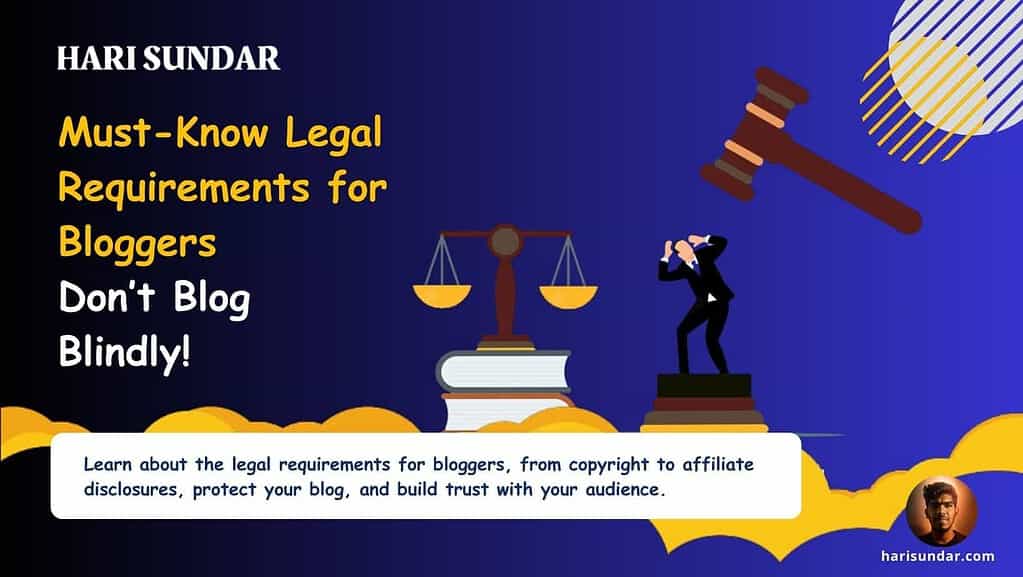
Imagine launching a blog without knowing the legal rules. It’s like driving without a license – you might get away with it for a while, but it’s risky.
That’s why understanding the legal side of blogging is crucial.
In this guide, I’ll break down the key legal requirements for bloggers in a simple, easy-to-understand way.
Knowing these rules not only protects you but also builds trust with your readers.
We’ll talk about copyright, privacy policies, and affiliate disclosures. This will help you focus on creating great content with confidence.
By the end, you’ll know the essential legal rules inside and out. This will help you keep your blog safe and successful.
After this blog post, you’ll:
- Protect your original content and use others’ work legally.
- Be transparent about collecting and using reader data.
- Clarify your blog’s purpose and limit your liability.
- Disclose sponsored content and paid partnerships properly.
- Stay updated on legal changes is essential.
Let’s dive in and make sure your blog is built on a solid legal foundation.
Copyright Essentials for Bloggers
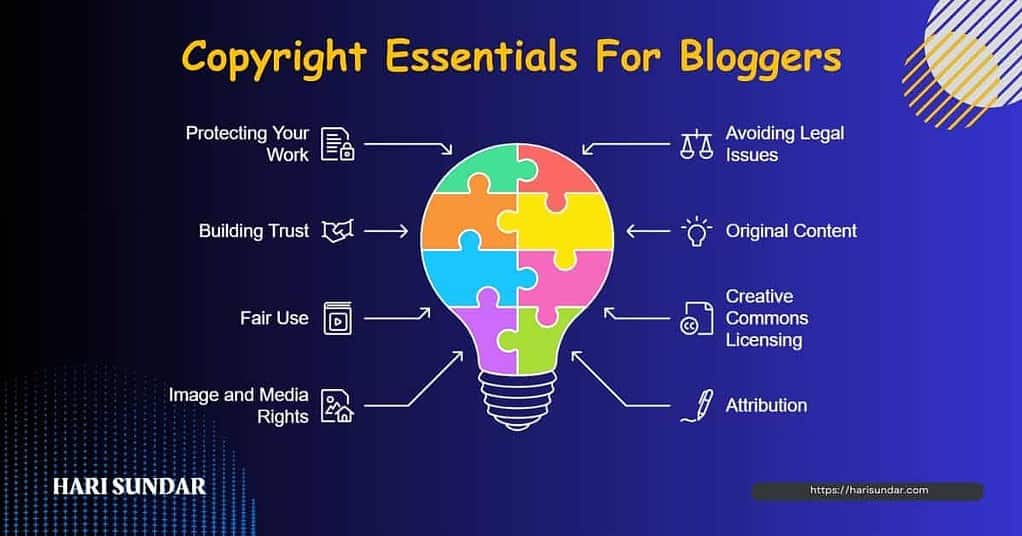
One of the most important legal concepts for bloggers is copyright. Think of it as a shield protecting your original work – from blog posts and images to videos.
Copyright lets you own your work, so you can decide how it’s used. This means you can copy it, share it, show it, or create new things based on it.
As a blogger, this applies to everything you create, including:
- Blog posts: The text and ideas in your articles are protected.
- Images: If you take your own photos or design graphics, they’re covered by copyright.
- Videos: Any videos you create or have exclusive rights to are also protected.
If you want to use content made by others, you should learn about Creative Commons licenses. These licenses explain how you can share or change someone else’s work.
Make sure always to give credit, even when using Creative Commons content. It shows respect for the creator and helps build good relationships in your blogging journey.
Crafting a Clear Privacy Policy
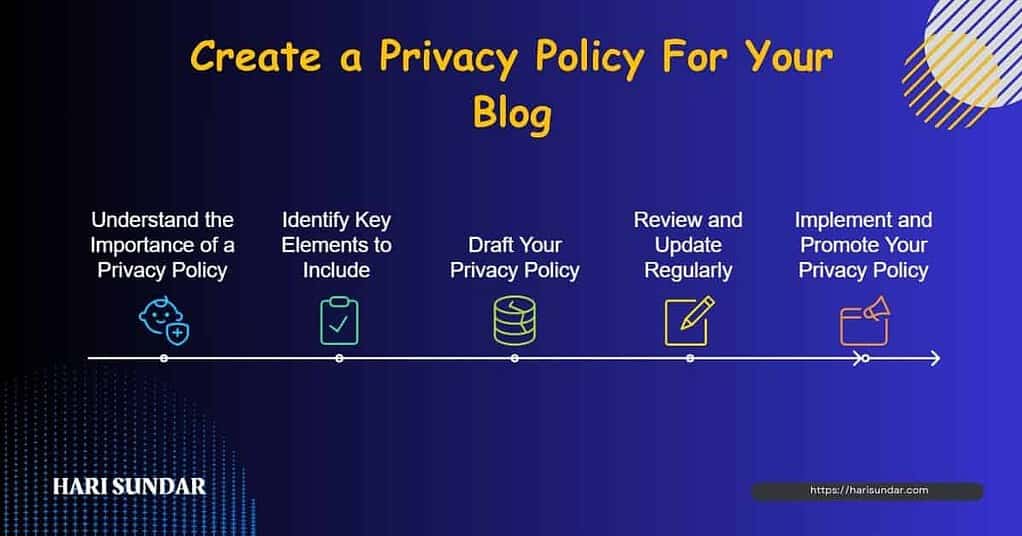
Building trust with your readers starts with a clear privacy policy. This document explains what information you collect, how it’s used, and how readers can control their data.
Here’s what your privacy policy should include:
- Information Collected: Be upfront about what data you collect, such as names, email addresses, or cookie data.
- Information Use and Storage: Explain how this data is used and stored (e.g., for newsletters).
- Opt-Out Options: Give readers a simple way to opt out of data collection or communication.
Having a privacy policy isn’t just good practice. It helps you stay compliant with data privacy laws and shows readers you respect their privacy.
Disclaimers: Setting Expectations
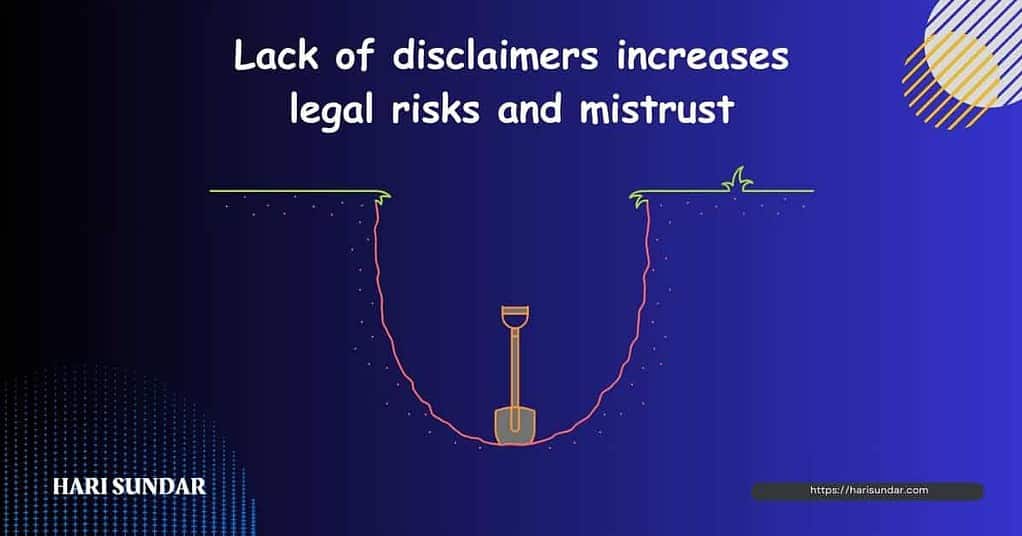
Disclaimers are essential for avoiding misunderstandings and legal issues. They set clear expectations for your readers and clarify the purpose of your blog.
Here’s what to include in your disclaimers:
Purpose of the Blog: Explain whether your blog is informational, opinion-based, or both.
No Professional Advice: If you offer advice, clarify that it isn’t professional advice. Encourage readers to consult experts.
Remind readers to do their research before making decisions based on your content.
Using disclaimers helps protect you from legal issues. It makes it clear what your blog’s purpose is and builds trust and credibility with your audience.
Affiliate Disclosure: Transparency is Key
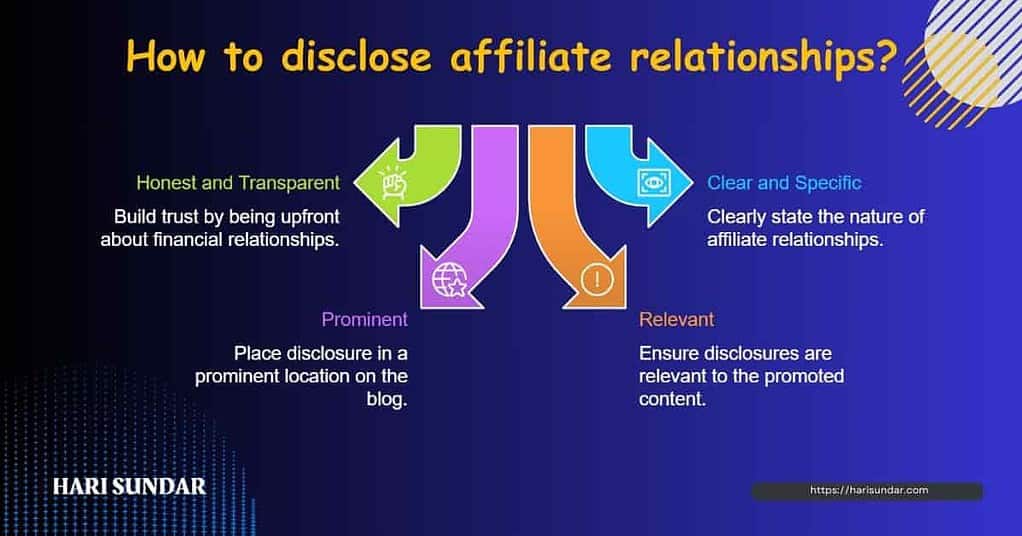
Affiliate marketing can boost your income, but transparency is a must. You need to disclose your affiliate relationships clearly to maintain credibility.
When to Disclose: Always disclose affiliate links, whether in a blog post or on a dedicated page.
How to Disclose: Make your disclosures easy to find and understand. Readers should know when they’re clicking an affiliate link.
Avoid Misleading Advertising: Be honest in your recommendations and make sure your readers know you may earn a commission.
Being transparent with affiliate links keeps you following the rules and builds trust with your audience.
Conclusion
Navigating the legal side of blogging might seem intimidating, but it’s crucial for your protection and success.
By understanding these rules, you’re not only avoiding legal trouble but also building trust with your readers.
Take the time to learn the legal basics, and ensure your blog is on solid ground.
If you have any questions or need advice, feel free to leave a comment below!
FAQs: Legal Requirements for Bloggers
What is copyright, and why is it important for bloggers?
Copyright protects your original content and ensures your blog is legally safeguarded.
How can I use content created by others legally?
Use Creative Commons content or get permission from the copyright holder. Always give credit.
What happens if I violate copyright laws?
You risk legal action, content removal, and damage to your reputation.
How can I avoid copyright infringement?
Create original content, use Creative Commons appropriately, and consult a lawyer if you’re unsure.
What is fair use?
Fair use allows you to use copyrighted material without permission in certain circumstances, like for commentary or criticism.
Can I use copyrighted images on my blog?
Yes, but you must have permission or use Creative Commons images.
What is a DMCA takedown notice?
A DMCA takedown notice requests the removal of copyrighted material from a website.
How can I protect my blog from copyright infringement?
Create original content, use licensed materials legally, and regularly monitor your blog for violations.






